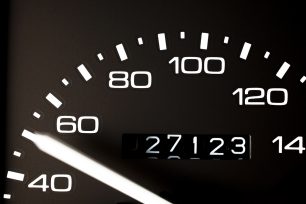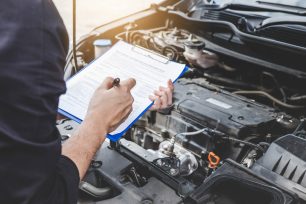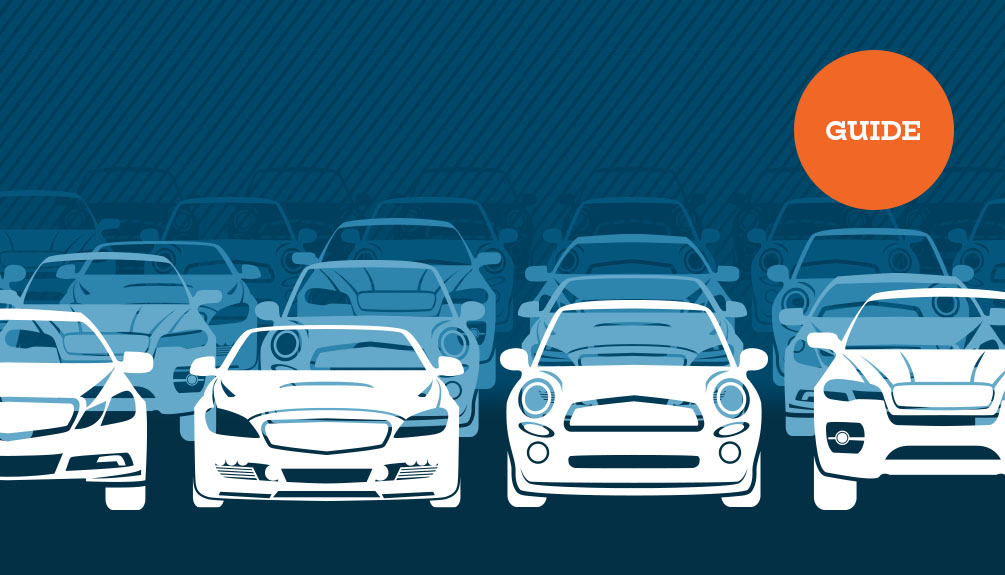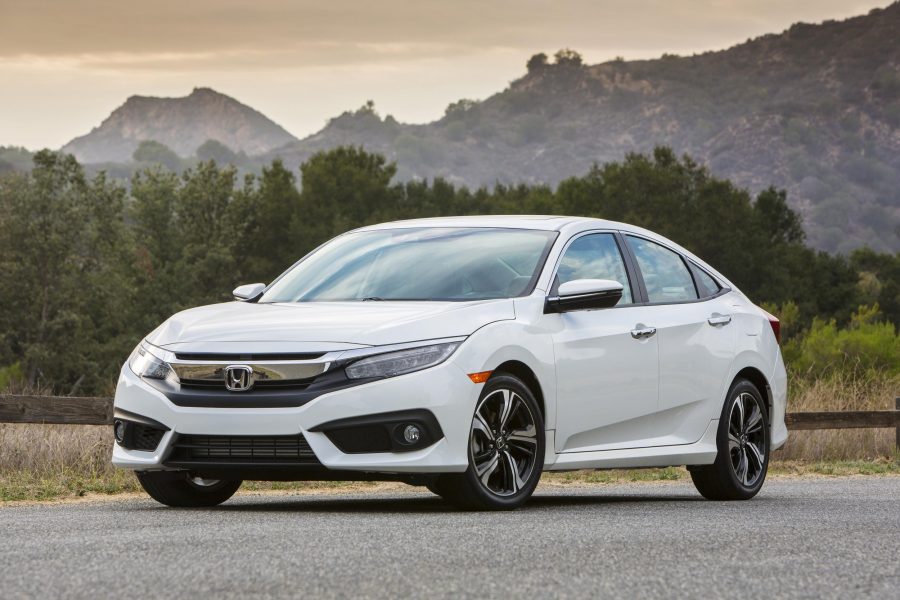A vehicle’s Check Engine light can turn any car ride into a harrowing experience. As soon as the check engine light illuminates, it’s hard not to hear the cha-ching sound of a cash register right along with it.
If the engine stops, so does the vehicle. That’s what can make the check engine light warning so scary. However, it’s important to understand that a Check Engine light can often be caused by something very simple. Let’s run through some of the main reasons your Check Engine light might be on so you have a better understanding of what your vehicle is trying to tell you.
What Your Check Engine Light Means
When your check engine light turns on, one or more onboard diagnostic trouble codes are stored in the car's computer . To diagnose what’s triggering your check engine light, you can retrieve the codes by using an OBD-II scanner. This can be done by a mechanic, or you can purchase a code reader from an auto parts store . Even if you use your own code reader to see what may be causing the problem, you should still get the problem diagnosed by a professional.
Be sure not to confuse your check engine light with other warning lights that may appear on your dashboard. You can refer to your vehicle’s manual for what some other warning lights mean, and what your check engine light will appear as. Sometimes it’s just an image of an engine, while others will have “check engine” along with it. You may also see a warning light that says “Service Engine Soon,” which can easily be confused for the check engine light and simply means that your vehicle is due for routine maintenance such as an oil change, brake inspection, or timing belt replacement. These warnings typically occur at regular mileage intervals such as when your odometer reaches 30,000, 60,000, and 100,000 miles.
What To Do When Your Check Engine Light Comes On
Various problems can change how the check engine light appears. Here are some common scenarios as a guide:1. The check engine light flickers or appears under certain conditions.
This means that there is only a problem during some driving conditions. Does the vehicle run differently when the light is on? If you notice a difference in performance, take the car to a mechanic immediately. If you don’t notice a change in vehicle performance, you can safely drive home, but it should be seen by a professional as quickly as possible.
2. The check engine light remains on.
If your check engine light stays on continuously and there are no noticeable problems with the car’s performance, there’s likely a problem with the emissions system. You should get the car professionally serviced as soon as possible, but immediate towing is not required.
3. The check engine light stays on with performance problems.
This indicates that your vehicle has a serious problem that likely involves a component or system needed for the vehicle to operate properly. If engine power is clearly reduced the vehicle might have gone into “limp mode”, which essentially means the engine is trying to protect itself by offering a bare minimum of power. In this case, you should pull over to a safe spot and have your vehicle towed to a dealer or repair shop.
4. The check engine light continually blinks in a pattern.
This scenario likely indicates that there’s a severe failure of the vehicle’s emission control system that’s causing the engine to misfire. This could indicate that the catalytic converter is overheating that could lead to a fire under the vehicle. In this case, you should pull over immediately and have your vehicle towed to a dealer or professional mechanic.
Common Causes for a Check Engine Light:
1. Loose Gas Cap
Something as benign as a loose gas cap can trigger your Check Engine light . That’s because the most common reason for a Check Engine light is from emissions system problems. Your fuel system is a pressurized system. The vehicle’s computer is monitoring that pressure at all times when your vehicle is running. If you leave your fuel cap off or loose (even by half a turn) it can trigger an emissions code in your vehicle’s computer . This, in turn, will cause the computer to turn on your Check Engine light . So, the first thing you should do if your light comes on is stop your vehicle somewhere safe, turn it off, and check your fuel cap. If it’s loose, put it back on and off automatically after a few moments. A worn or defective fuel cap can also cause this problem.2. Malfunctioning Oxygen Sensors
Your oxygen sensors are another emissions system part that will trigger your Check Engine light. Ironically, they aren’t really attached to the engine. They are screwed into your exhaust system in various places to monitor the air coming out of your engine. They tell your computer if your air/fuel mixture is running rich or lean. Most cars today have at least two sensors, one before the catalytic converter and one after (this is to monitor the air on both sides to see if the converter is also doing its job), while some vehicles have several for redundancy’s sake. Each sensor is electronically connected to your computer. If the sensor fails, becomes clogged, or if it gets a reading it’s not supposed to be getting, the faulty oxygen sensor will trigger your Check Engine light.
3. Other Emissions System Parts
With today’s emissions standards, the emissions control systems on most vehicles have become very complex. They are much more complex than a catalytic converter and a couple of sensors. They now consist of filters, canisters, exhaust gas recirculation (EGR) valves, positive crankcase ventilation (PCV) valves, smog/air pumps, bypass valves, and several sensors to monitor the entire system. Should any of these areas fail, it can trigger any of a number of various codes in your computer. These codes all trigger the Check Engine light.
4. Failing Mass Airflow Sensor
Your vehicle’s mass airflow sensor (MAF) measures the amount of air entering your engine to determine how much fuel is required to run properly. If there are any leaks before or after the mass airflow sensor, a light will illuminate. These mass airflow sensors are sensitive to oil, water vapor, or any debris. Sometimes, a simple cleaning can fix the issue. Or, the sensor may need to be replaced. Failure to replace a faulty mass airflow sensor can lead to reduced performance and diminished fuel economy.
5. Faulty Catalytic Converter
Your vehicle’s catalytic converter protects the environment by converting carbon monoxide into carbon dioxide. Oxygen sensors carefully monitor the catalytic converter’s performance, and if something is wrong with the converter a trouble code will appear. A failed catalytic converter is usually a secondary issue and is likely caused because other issues were ignored. If you don’t fix your catalytic converter, you will fail an emissions test, experience reduced performance and fuel economy, and can cause eventual engine failure.
6. Misfires
An engine misfire occurs when something goes awry as the spark plug ignites the air/ fuel mixture in your car’s combustion chamber . A misfire can be caused either on one cylinder, or on multiple cylinders. Here are some common culprits:- Defective ignition coil
- Defective fuel injector
- Vacuum leak
- Worn spark plugs and/or wires
- Bad compression
Bottom Line:
You should never ignore your vehicle’s check engine light . While the scenarios for the light can range from mild to severe, you should always have your vehicle checked by a trusted professional to properly diagnose the issue. The way your check engine light appears can provide clues as to whether your vehicle needs immediate attention , or if you can safely drive home before going to an auto repair shop . Ignoring a check engine light can lead to more costly repairs down the road and can also present a safety hazard.More from iSeeCars.com:
- What’s the Cost of Brake Pads and Rotors?
- What is a Powertrain Warranty?
- How Much Does it Cost to Replace a Windshield?


































































